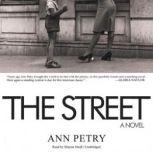

In the following analysis, we will primarily deal with the last chapters of the novel and in particular with the end of the novel, which shows Lutie Johnson leaving Harlem and moving to Chicago. 1 Hence, this novel also touches upon the topic of disillusionment in city life. Apart from being an urban novel, Petry also captured the symbolic character of Harlem in The Street, namely that it is a “(…) symbol of the Negro’s perpetual alienation in the land of his birth”. Thus, one might also claim that Petry’s novel is about portraying the difficulties a single coloured woman and mother had in Harlem, living on 116th Street in New York City. Hence, The Street is also concerned with different aspects of urban life. The story deals with the life and trials of the Mulatto woman Lutie Johnson and her struggle to find a place in this environment for herself and her son. The setting of this novel is Harlem in the 1940s. The Second Part of the Novel: Lutie’s DisillusionmentĪnn Petry, a female Afro-American novelist, published her novel The Street in 1946. An Analysis of the Novel’s End and Lutie’s Moving to ChicagoĢ.1.

Access-restricted-item true Addeddate 19:52:57 Boxid IA181401 Camera Canon EOS 5D Mark II City Boston Donorįriendsofthesanfranciscopubliclibrary Edition 15.


 0 kommentar(er)
0 kommentar(er)
